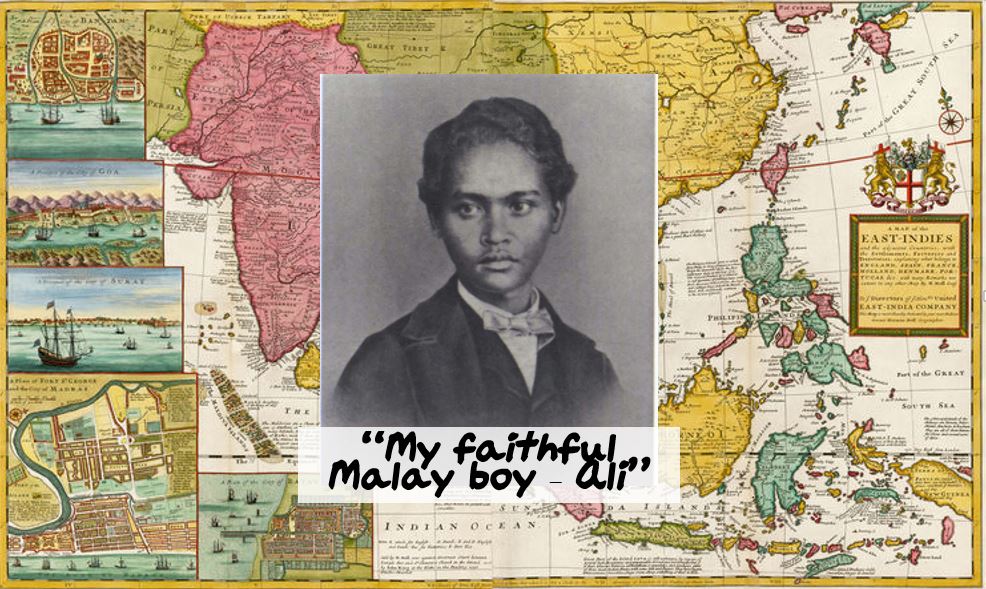Alfred Russel Wallace was a British naturalist, who co-discovered the theory of evolution with his more famous counterpart Charles Darwin.
Unlike Darwin, however, Wallace visited Singapore and our region. From 1854 to 1862, he came here to study our natural history, where he collected specimens. He also tried and wrote a pretty cool review of our favourite fruit -- the durian.
Singapore was his first stop.
During his travels, he employed a number of assistants to collect animal specimens and help him with his daily chores.
Introducing Ali
Most of his assistants were only with him for short periods of time, but there were two exceptions -- Charles Allen and Ali, who were mentioned extensively in Wallace's writings on his time here.
Of the two, Wallace favoured Ali, a Malay teenager whom he employed from the region, over Charles.
Charles was a London boy, whom Wallace described as "careless" and believed that "he will never improve." In contrast, Wallace called Ali the "best native servant [he] ever had."
Ali accompanied Wallace from December 1855 in Sarawak, Borneo, until February 1862 when Wallace returned to Britain from Singapore. According to Wallace's autobiography called My Life,
"He [Ali] accompanied me through all my travels, sometimes alone, but more frequently with several others, and was then very useful in teaching them their duties, as he soon became well acquainted with my wants and habits."
Range of chores
Ali started out as a cook and a servant, but later became Wallace's collecting assistant as well as his "head man" after proving his competence and trustworthiness.
Basically, Ali was a really awesome assistant:
"When I was at Sarawak in 1855 I engaged a Malay boy named Ali as a personal servant, and also to help me to learn the Malay language by the necessity of constant communication with him. He was attentive and clean, and could cook very well. He soon learnt to shoot birds, to skin them properly, and latterly even to put up the skins very neatly. Of course he was a good boatman, as are all Malays, and in all the difficulties or dangers of our journeys he was quite undisturbed and ready to do anything required of him."
[related_story]
Tiger tales
Wallace's first stop was in Singapore, where Ali saw a live tiger. It was likely that this was the tiger captured alive in Bukit Timah and put on public display.
It was speculated that this encounter in Singapore formed the basis of his tall tales that he would later tell in the Moluccas, where tigers were unknown.
Wallace recounted Ali's tales to people in the Moluccas,
"He declared that these tigers were men who had been great magicians and who changed themselves into tigers to eat their enemies,-that they often first appeared by the side of a benighted traveller as a small cat or dog, and gradually grew bigger and bigger, -or they appeared first as a man and talked with the traveller, till they came to some lonely place, when they dropped down on all fours, changed into a huge tiger and devoured him. These tales were accepted as literal facts by his hearers, and listened to with breathless attention and awe."
A solid 5/7 for creativity.
According to I am Ali Wallace by John van Wyhe & Gerrell Drawhorn, Wallace "left the shooting of birds to his assistants, whereas he concentrated on insects."
By the time they had reached Aru Islands (in Indonesia) in 1857, Wallace wrote that Ali had already picked up the necessary skills to collect bird specimens:
"He had already been with me a year, could turn his hand to anything, and was quite attentive and trustworthy. He was a good shot, and fond of shooting, and I had taught him to skin birds very well."
Ali helped to collect specimens such as the Great Bird of Paradise. He even found a new form of the Bird of Paradise which would later be named the Wallace's Standard Wing.
At that time, it was often standard practice to name discoveries after one's employer, especially if he didn't want to get fired.
Leaving Ali
When Wallace finally arrived in Singapore in 1862 to return home, he took a photograph of Ali in European clothes, something which he felt "did not suit him nearly so well as his native dress."
Throughout Wallace's travels, it was estimated that he had employed over 100 men, out of which at least 30 were collecting assistants.
Ali accompanied Wallace for many of his travels and featured prominently in his accounts, suggesting that he was exceptionally intelligent and competent.
Even though Wallace had an impressive tally of 125,660 natural history specimens, a significant portion of it, including the majority of the birds, were likely collected by Ali.
The exact number, however, remains unknown and the extent of Ali's contribution to Wallace's discoveries is still being studied.
Top photo adapted from Rare maps and "I am Wallace."
If you like what you read, follow us on Facebook, Instagram, Twitter and Telegram to get the latest updates.
